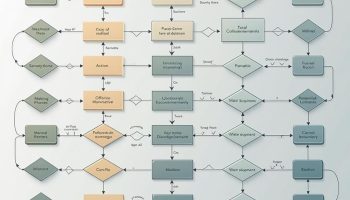Effective Risk Response is a critical part of any business. It’s important to have a plan in place for when something goes wrong. But it’s also important not to spend too much time and money on risk responses that might never happen.
The only thing worse than not having a plan for an emergency is waiting until you are in the middle of one to create your plan. This blog post will discuss 10 strategies to ensure that you are prepared for any type of crisis, be it natural. These risk response planning tips can help you prepare for anything and everything that could happen.
Risk Response Strategies:
Effective Risk Response planning is a difficult process. It requires a realistic evaluation of the risk, and an understanding of how to mitigate it.
When creating your risk management and mitigation strategies, be mindful of how much time and money they require. If it takes too long for the appropriate staff members to respond, then your business may suffer negative consequences.
Here are 10 strategies for effective Risk Response Planning in order to develop a plan for both mitigation and response.
Risk Avoidance in Leadership and Stakeholder:
Be aware of the risks that are being presented in your organization’s leadership, and within all stakeholders. If you can prevent the risk from taking place by removing a person or adjusting their influence and power. Then do so.
You have to ensure your leaders and stakeholders are prepared to take the necessary steps in order to respond effectively.
Put processes in place ahead of time:
It is important to have procedures already documented before an actual emergency occurs. This will allows everyone to be on the same page when responding quickly is essential. By putting these measures into place well before they are needed.
Business owners will have considerably more leeway to respond appropriately during stressful situations. Even without having to make snap decisions based solely on intuition.
Evaluate the risk:
Evaluate and assess each risk, and determine what level of severity it may present based on how likely it is to occur. Risk assessment should be completed by trained professionals that have an understanding of statistics, probability, and potential consequences.
Risk is a part of doing business. And that’s why it’s important to know what the potential hazards are for your company. Doing so will allow you to develop a plan of action that can mitigate or eliminate them. It may be better to walk away from an opportunity knowing you were at least aware of all possible implications.
Prepare ahead:
It is also necessary to prepare yourself as much as possible. This way you can reduce some of the pressures associated with responding effectively in time-sensitive situations. Doing so will help ensure everyone involved has access to up-to-date information and resources when needed most.
This way individuals don’t feel like they must make decisions on their own without the necessary tools available. In this way, they will feel more confident in their decisions and the company as a whole.
Identify key risks:
Risk Response planning is about more than just creating steps for mitigating the risk. It is also about identifying what kind of risks are most prevalent for your organization and how to prepare specifically for those threats.
By understanding which types of issues might occur, you can better determine whether or not an event warrants a response at all before it even happens – saving time and money.
Have clear protocols:
Having clearly defined steps in place ahead of time will help keep everyone on track when making important decisions during times of emergency. When people know exactly what their role is within the company.
They will be more likely to act with greater speed instead of hesitation because they aren’t sure where to start. This can make them waste valuable minutes that could lead to disaster if no one whose job it is to do so takes charge.
Create a contingency plan:
It’s important to have a clear idea about what to do if the risk is realized. Because responding quickly and accurately could be key to avoiding negative consequences from occurring in the first place. But even more importantly, it will help you decide whether or not your organization should engage at all.
This way there isn’t much confusion when making tough decisions during times of emergency which speeds up response time instead of slowing things down by people second-guessing themselves before acting on something they aren’t sure of.
Program training sessions:
It’s important for every member of your team to know exactly what role he or she plays when responding quickly is essential. By providing each person with thorough information ahead of time you can help ensure everyone goes through refresher courses before an emergency arises.
This will ensure that nothing falls through the cracks due to a lack of communication between employees during times where quick thinking isn’t an option. Individuals will feel more confident in their roles and the company as a whole when all members know what to do during high-stress situations that could potentially arise with any given event.
Avoiding the potential consequences:
There are many things you can do to prepare yourself. By taking steps beforehand, you may be able to reduce or eliminate some of the pressures associated with responding quickly in time-sensitive situations.
This way individuals don’t feel like they must make decisions on their own without the necessary tools available. In this way, they will feel more confident in their decisions and the company as a whole.
Transfer risks via outsourcing:
Risk Response planning is about more than just creating steps for mitigating the risk. It is also about identifying what kind of risks are most prevalent for your organization and how to prepare specifically for those threats.
By understanding which types of issues might occur, you can better determine whether or not an event warrants a response at all before it even happens. So you can outsource the risks to a third-party company that specializes in that risk.






